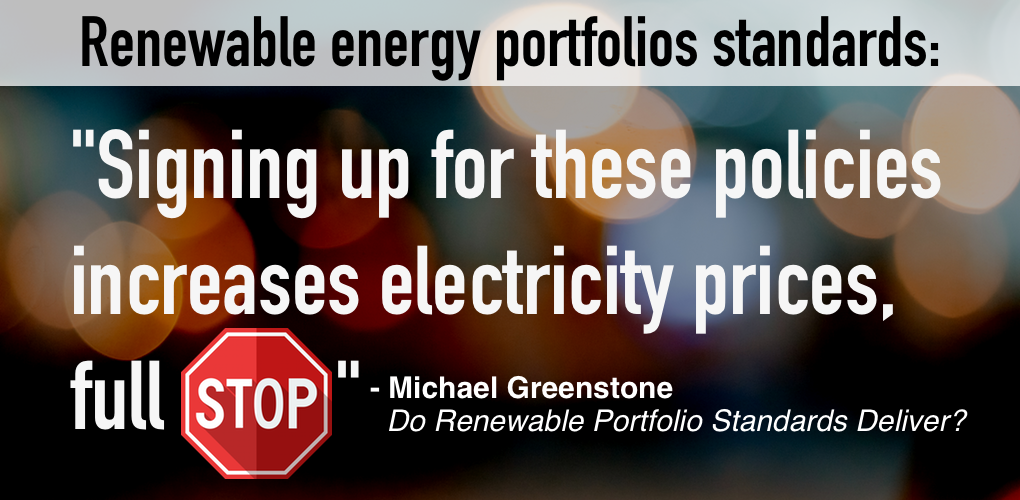
Mandating Higher Electricity Prices
The suspicion for some time has been that renewable portfolio standards are an incredibly costly and inefficient energy policy. Yet, they have grown in popularity and ambition with 29 states and the District of Columbia employing these mandates and policymakers from time to time flirting with a national standard. Suspicion has now been replaced by data. A new, comprehensive study from the University of Chicago’s Energy Policy Institute indeed confirms what was long suspected: renewable portfolio standards are driving up electricity prices.
The authors of the study found that these standards, which mandate a growing share of electricity come from renewable sources of power, usually wind and solar, increase power costs through expanded spending on backup generation, transmission infrastructure and through stranded assets (the cost that comes from shutting down existing power plants to make way for wind and solar generation). It’s an important point. While the direct costs of building new wind and solar generation are high (and let’s not forget the subsidies), it’s the hidden costs – the need for backup, the need for new transmission, the loss of well-operating, existing plants – that make these policies so costly.
Just how costly? “All in all, seven years after passage, consumers in the 29 states had paid $125.2 billion more for electricity than they would have in the absence of the policy,” the authors observed.
Of course, this study has its critics. But the authors and their research can’t, and shouldn’t be, easily dismissed. They’re top economists and the lead author, Michael Greenstone, is a former senior economic advisor to President Obama.
Greenstone observed, “The headline result here and the most important result in the whole exercise: signing up for these policies increases electricity prices, full stop. Second point: what do you get in exchange for that?”
The question he poses is a fundamental and essential one. What exactly are consumers paying so much more for? These mandates have done wonders to fill the coffers of wind and solar developers, and utilities too have joined in to ride the wave and capture hefty returns for investors, but is this an effective or replicable emissions reductions strategy? Hardly.
While critics of the study point out that the costs of wind and solar power have fallen over time and insist this study doesn’t adequately account for those trends, there’s ample evidence to show that forcing more and more intermittent sources of power onto the grid significantly drives up the cost of electricity. The cost of a wind turbine or solar array may be falling but the system costs of integrating more and more of these weather-dependent sources of power are going up. For all intents and purposes, the existing grid must be scrapped and rebuilt to manage our growing reliance on wind and solar power. It’s a breathtakingly expensive undertaking and one that seems to be a solution in search of a problem.
If renewable mandates drive up electricity costs, and the evidence now from the U.S. and Germany is rather clear that they do, can we expect developing nations trying to industrialize or address energy poverty to follow suit? Of course not.
There is a very good reason why coal remains the world’s leading fuel for electricity generation. Hundreds of new coal plants are planned or under construction around the globe, particularly in Asia. This is the energy reality that should inform our own approach to emissions reductions.
Instead of raising electricity costs here through mandates and placing an undue burden on consumers while weakening the global competitiveness of our economy, we should be leaning into innovation and the deployment of the technologies that can reduce emissions from the fuels and power sources the world uses and will continue to use. The renewable portfolio standard has become the de-facto U.S. emissions-mitigation strategy. It’s one expensive road to nowhere.
- On April 24, 2019
